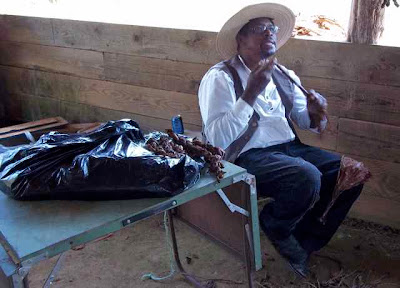BTW Monument—Part II
Part I of my recent visit to the Booker T. Washington National Monument is here.
After we left the kitchen, we went down toward the barn and animal pens.
We passed a man with a display of varieties of old-timey apples.
I peeked through the slat of a poultry pen to see chickens and turkeys. What a nice coop they had.
On the other side of the coop, ducks swam in a small pond.
Bottoms up!
Apparently the driver did it on purpose. He circled the building and halted the team so passengers could disembark and others could load. Soon the wagon was filled to capacity, including some babes in arms. What were their parents thinking?
I didn't like the looks of the horses' feet. They didn't have shoes and all the hooves were badly chipped and cracked. If they'd been on soft ground, that might have been OK, but they were on hard-packed gravel. I also didn't like how the collar fit the horse in the foreground below. The top was resting a bit far up his neck and the bottom was pretty far away from his body, so it wasn't helping him pull efficiently.
From a nearby pasture, another horse watched. I wonder if he realized how lucky he was not to be working.
Beside the barn, some musicians played.
Inside the barn, an interpreter twisted tobacco. Tobacco was the money crop on the Burroughs Plantation, as it was on most farms in Franklin County. (Note: The table and plastic bag were NOT authentic to the period.)
The tobacco basket was typical of the period, as was the rack to dry tobacco.
A closer look at the tobacco leaves.
Elsewhere in the barn, a potter demonstrated his craft.
Beyond the barn, sheep grazed in the pasture.
After we left the barn, we ventured to the blacksmith shop.
After we watched the blacksmiths work, we headed for the parking lot.
If you haven't visited the Booker T. Washington National Monument, it's well worth a trip to see how things were done in the old days of Franklin County, Virginia.
~
Labels: farming, Franklin County history


















0 Comments:
Post a Comment
<< Home